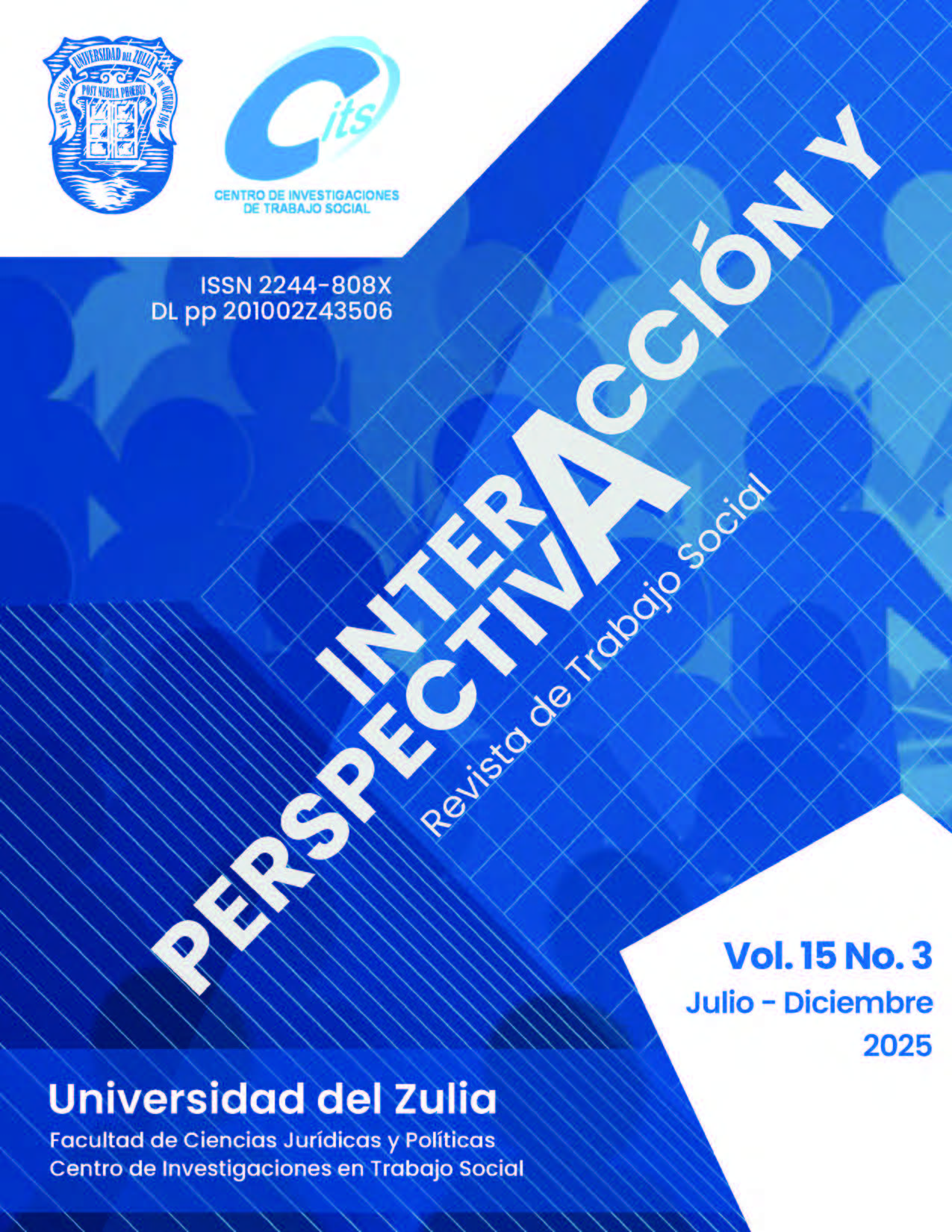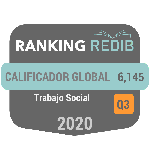Social communication between social workers and media: transparency, trust, and digital adaptation
Abstract
Communication between social workers and media representatives plays a crucial role in shaping public opinion by promoting informational transparency and strengthening trust in social institutions. In the current context of digitalization and the expansion of information technologies, this interaction is undergoing profound transformations that require a thorough analysis of emerging trends and the most effective approaches for designing communication strategies. This article examines prevailing models of social communication and defines optimal strategies to enhance interaction between these two actors. The methodology is based on theoretical analysis, comparative methods, and content analysis of scientific sources, allowing for the identification of current challenges and the evaluation of dominant approaches in communication processes. Findings reveal that the effectiveness of social communication depends on the media literacy of social workers, their ability to adapt traditional methods to digital environments, and the implementation of long-term sustainable strategies. Key factors for improving the quality of engagement with the media include the stra- tegic use of social networks, the creation of integrated information platforms, and specialized training programs. However, several barriers persist, such as low public trust in social services, bureaucratic constraints, and the media’s tendency toward sensationalism. The practical relevance of the study lies in the develop- ment of recommendations for social institutions to strengthen their communication strategies, thereby enhancing their efficiency, ensuring transparency, and fostering a positive image of the social sector.
Downloads
References
Beletska, A. (2018). Social problems of social communications research as mass emotion areas of functioning. Naukovì Zapiski Ìnstitutu Žurnalìstiki, 73, 22–33. https://doi. org/10.17721/2522-1272.2018.73.2
Ben Romdhane, S., Elareshi, M., Alsridi, H., & Ziani, A. (2024). Public engagement via social media content: An organisational communication aspect. In B. Alareeni & A. Hamdan (Eds.), Navigating the technological tide: The evolution and challenges of business model innovation. Lecture Notes in Networks and Systems, Vol. 1083 (pp. 477–486). Springer, Cham. https://doi. org/10.1007/978-3-031-67431-0_46
Bilan, N. (2016). Social communications as a factor in the formation of the communicative environment. Ukrainian Scientific Journal «Education of the Region, 4, 84–89. https://social-science.uu.edu.ua/article/1340
Chebanova, O. Ye. (Ed.). (2020). Social communications and art studies in the aspect of modern civilizational concepts: Collection of scientific papers (Vol. 1). Kyiv International University. Retrieved from https://kymu.edu.ua/upload/pdf_files/zbirnyk_naukovykh_prats_sotsialni_komunikatsiyi_i_mystetstvoznavstvo_v_aspekti_suchasnykh_tsyvilizatsiynykh_kontsept- siy_2020.pdf
Ercegovac, I. (2017). Influencers as opinion leaders in primary groups on social media and their roles in the new media sphere: Social media and classic theories of mass communication. Komunikacije, Mediji, Kultura, 9(9), 251–268. https://doi.org/10.5937/gfkm1709251e
Gross, J., & Lunardo, R. (2024). Online communication styles of narcissistic content and low versus high social media engagement: Evidence from Instagram. Marketing Letters, 35, 547–560. https://doi.org/10.1007/s11002-023-09707-1
Gualtieri, A. (2021). The Brazilian case: The effect of social media on a democratic regime of today. In C. Sieber-Gasser & A. Ghibellini (Eds.), Democracy and globalization. Economic analysis of law in European legal scholarship (Vol. 10, pp. 149-169). Springer, Cham. https://doi.org/10.1007/978-3-030-69154-7_7
Hohenstein, J., Kizilcec, R. F., DiFranzo, D., et al. (2023). Artificial intelligence in communication impacts language and social relationships. Scientific Reports, 13, 5487. https://doi.org/10.1038/s41598-023-30938-9
Hutchinson, J., Suwana, F., & McTernan, C. (2024). Social media and politics. In Social media in society (pp. 119-146). Palgrave Macmillan, Cham. https://doi.org/10.1007/978-3-031-66360-4_7
Jaster, D., Swed, O., & Frère, B. (2022). The critical masses: The rise of contemporary populism and its relation to solidarity, systems, and lifeworlds. Soc, 59, 701–713. https://doi. org/10.1007/s12115-022-00746-4
Karsgaard, C. (2023). Social media learning: Public pedagogy, power, and agency. In Instagram as public pedagogy (pp. 75-130). Palgrave Studies in Education and the Environment. Palgrave Macmillan, Cham. https://doi.org/10.1007/978-3-031-26182-4_3
Kostiieva, T. B. (2021). Communications in the social sphere: Methodical guidelines (Methodical Series, Issue 371). Petro Mohyla Black Sea National University. https://dspace.chmnu.edu.ua/jspui/bitstream/123456789/703/1/Kostiieva_T.B._Communications_in_the_Social_Sphere. Pdf
Livingstone, S. (2015). From mass to social media? Advancing accounts of social change. Social Media + Society, 1(1). https://doi.org/10.1177/2056305115578875
Merolla, A.J., Neubauer, A.B. & Otmar, C.D. Responsiveness, Social Connection, Hope, and Life Satisfaction in Everyday Social Interaction: An Experience Sampling Study. Journal ofof Happiness Studies, vol. 25, no. 7. https://doi.org/10.1007/s10902-024-00710-5
Moiseeva, N. I. (2015). Social and communication activity as a historical and social practice: Monograph. Kharkiv Petro Vasylenko National Technical University of Agriculture. https://repo.btu.kharkov.ua/jspui/bitstream/123456789/7937/1/Moiseeva_Social%20and%20communication%20activity_2015.pdf
Nguyen Phuc, H., Dao Thi Tuyet, L., & Tran Huu, T. (2024). The impact of integrated social communication on resident’s perception and support for tourism development. Quality & Quantity. https://doi.org/10.1007/s11135-024-01831-y
Norkus, Z., & Morkevičius, V. (2024). The contribution of sociology to post-communist restoration in Lithuania. In B. Roncevic & T. Besednjak Valič (Eds.), Sociology and post-socialist transformations in Eastern Europe (pp. 227-247). Springer, Cham. https://doi.org/10.1007/978- 3-031-65556-2_12
Pripoae-Şerbănescu, C., & Maţoi, E. (2023). Social media in the GCC countries—Facilitator or curse for Generation “Z”? In M. M. Rahman & A. Al-Azm (Eds.), Social change in the Gulf region. Gulf Studies (Vol. 8, pp. 17-39). Springer, Singapore. https://doi.org/10.1007/978-981-19-7796-1_2
Ross, E. W. (2024). Society, democracy, and economics: Challenges for social studies and citizenship education in a neoliberal world. In C. Fridrich, U. Hagedorn, R. Hedtke, P. Mittnik, & G. Tafner (Eds.), Economy, society and politics (pp. 33-52). Springer, Wiesbaden. https://doi. org/10.1007/978-3-658-42525-8_3
Savchuk, N. M. (2024). Media communications in the system of social communications. Scientific Notes of V.I. Vernadsky Taurida National University. Series: Philology. Journalism, 35(74), 78–85. https://doi.org/10.32782/2710-4656/2024.3.2/13
Siricharoen, W. V. (2023). Social media as communication–transformation tools. In C. So-In, N. D. Londhe, N. Bhatt, & M. Kitsing (Eds.), Information systems for intelligent systems. Smart Innovation, Systems and Technologies, Vol. 324 (pp. 1–11). Springer, Singapore. https://doi.org/10.1007/978-981-19-7447-2_1
Williams, W. M., & Ceci, S. J. (2023). How politically motivated social media and lack of political diversity corrupt science. In C. L. Frisby, R. E. Redding, W. T. O’Donohue, & S. O. Lilienfeld (Eds.), Ideological and political bias in psychology (pp. 357-375). Springer, Cham. https://doi.org/10.1007/978-3-031-29148-7_13
Yahodzinskyi, S. (2023). Social communications of the information society: Theoretical and applied aspects. Retrieved from https://www.researchgate.net/publication/368864990_Socialni_komunikacii_informacijnogo_suspilstva_teoreticni_ta_prikladni_aspekti_Monografia_-_2020/ citation/download
Zaika, V., Heta, A., & Vyshar, Y. (2021). Communicative potential of future social workers.
Naukovij Vìsnik Užgorodsʹkogo Unìversitetu. Serìâ Pedagogìka, Socìalʹna Robota, 48, 148–152. https://doi.org/10.24144/2524-0609.2021.48.148-152

















